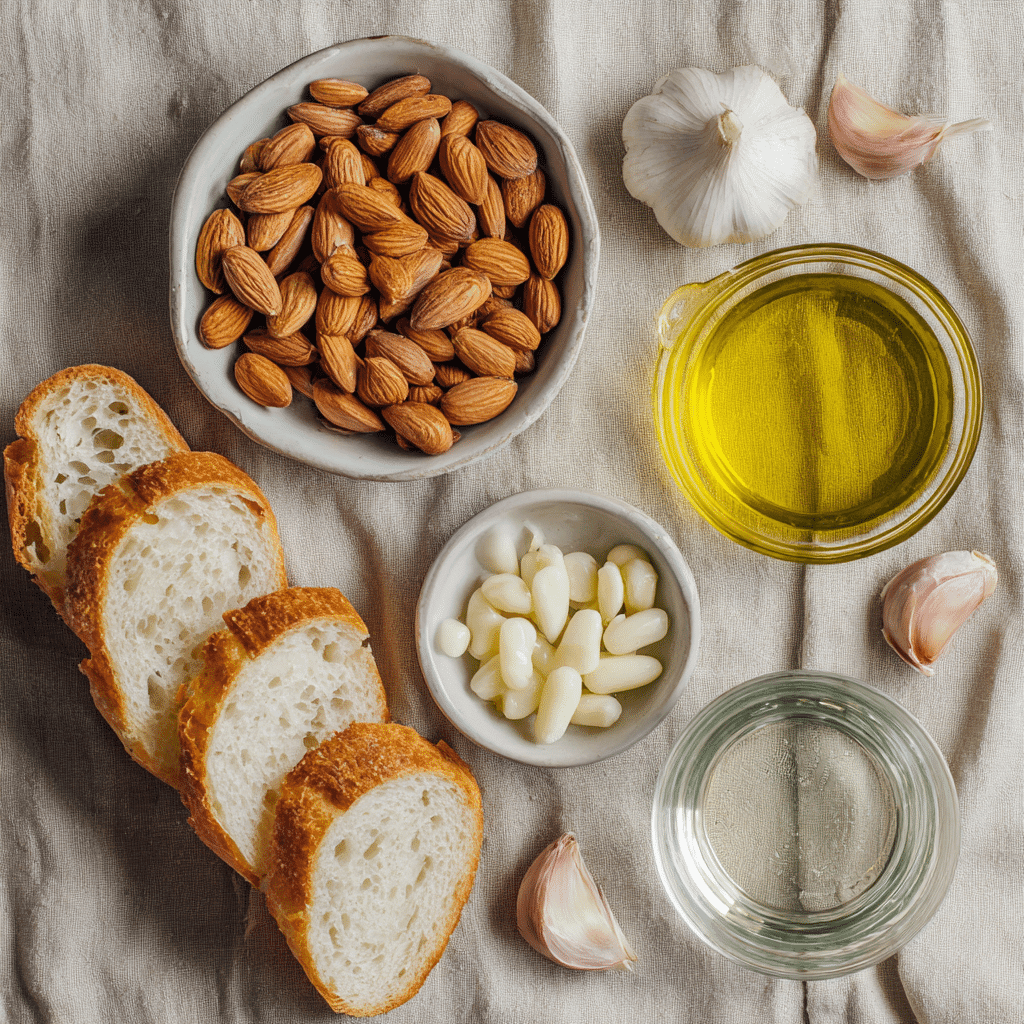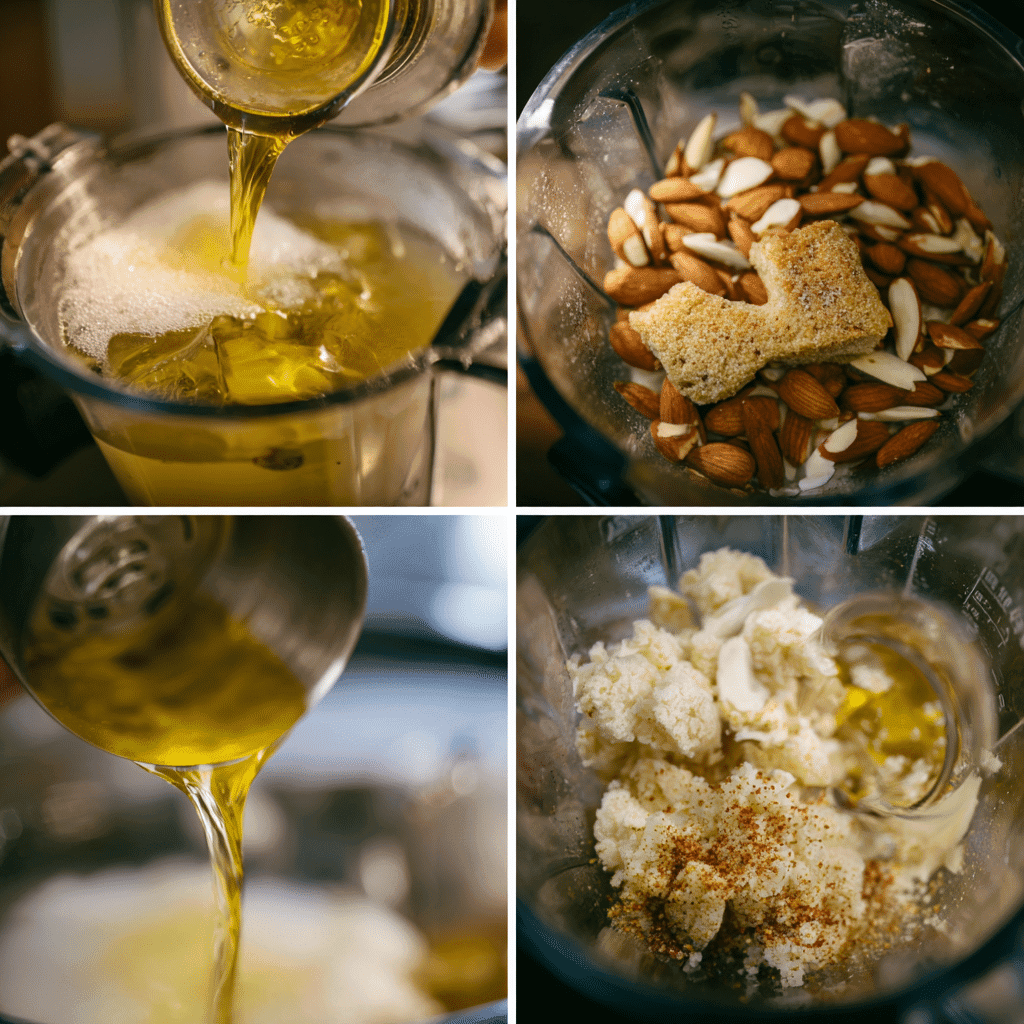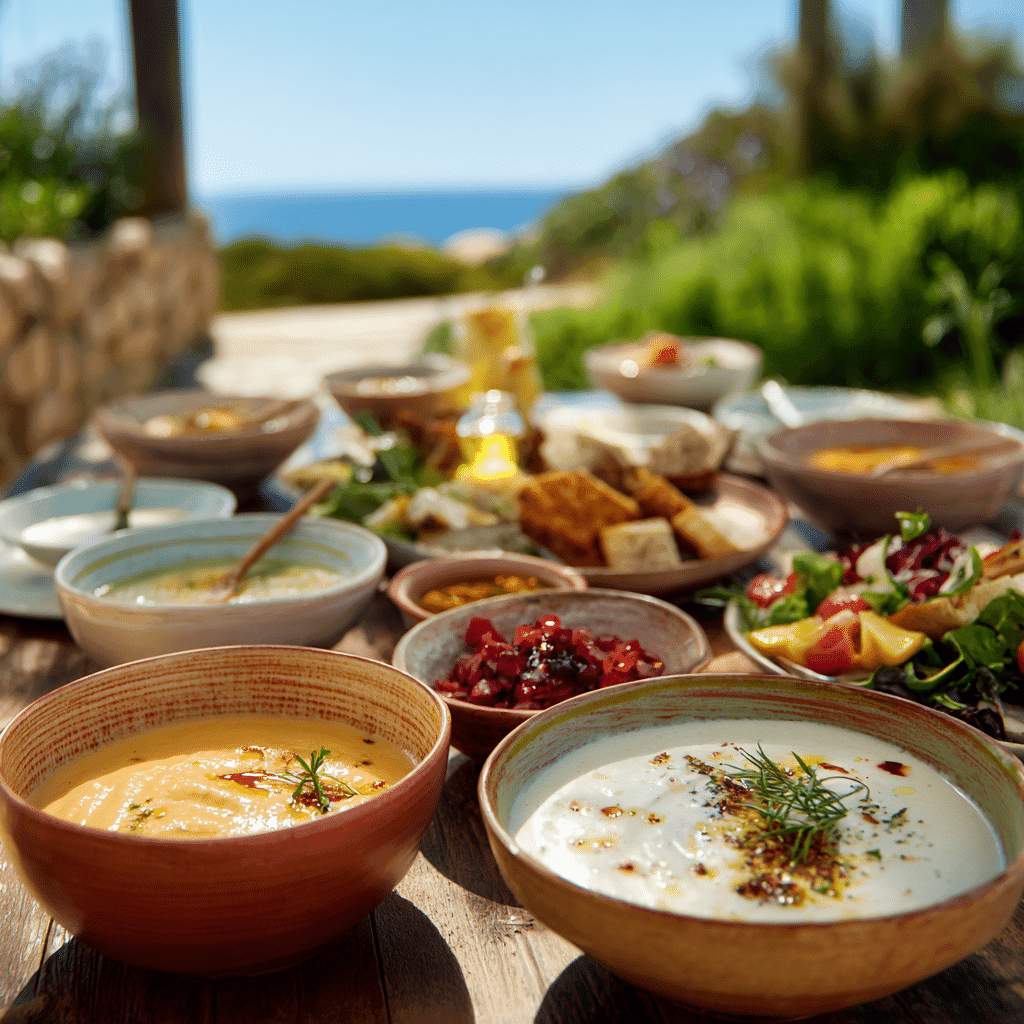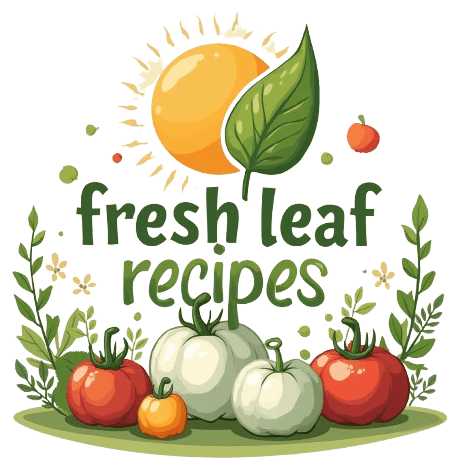Ajo blanco soup is the refreshing, creamy, garlic-almond soup that’s taken my summer table by storm. I first fell in love with it during a scorching July in southern Spain, where it was served in tiny ceramic bowls alongside juicy grapes and rustic bread. The simplicity, flavor, and chill of ajo blanco offered instant relief—and unforgettable taste. In this article, we’ll uncover what ajo blanco soup is, where it comes from, how it differs from gazpacho, and why this ancient recipe is suddenly a trendy favorite again. Get ready to meet your new go-to summer dish.
Table of Contents
1: The Story of Ajo Blanco: A Cold Classic with Deep Spanish Roots
When I visited Andalusia years ago, I didn’t expect ajo blanco soup to impress me more than gazpacho—but it did. This ancient Spanish dish hails from the sun-drenched region of Málaga and Granada, where it was originally created by peasants as a humble way to use leftover bread, raw garlic, and almonds. The result? A smooth, velvety, cold soup that’s both nourishing and packed with flavor.
Long before tomatoes reached Spain, ajo blanco was already part of the local cuisine. Its pale color gives it the nickname “white gazpacho,” though it’s completely different in taste and texture. Traditionally served with green grapes or melon, it offers a sweet contrast to the garlic punch and creamy almond base. Today, ajo blanco soup is a must on hot days, often found in tapas bars and home kitchens alike.
To enjoy more chilled inspiration, don’t miss our chilled corn soup or refreshing cucumber avocado soup, two reader favorites for warm weather meals.
Print
Ajo Blanco Soup
- Total Time: 15 minutes
- Yield: 4 servings
- Diet: Vegan
Description
Ajo blanco soup is a refreshing, creamy, garlic-almond soup from Andalusia, Spain—perfectly chilled and naturally vegan.
Ingredients
- 1 cup blanched almonds (or almond flour)
- 2 to 3 garlic cloves, peeled
- 2 slices of stale white bread, crusts removed
- 1/4 cup extra virgin olive oil
- 1 tablespoon sherry vinegar (or white wine vinegar)
- 2 cups cold water
- Salt to taste (start with 1/2 teaspoon)
- Optional toppings: halved green grapes, diced melon, extra olive oil, toasted slivered almonds
Instructions
- Soak the bread in cold water for a few minutes, then gently squeeze out the excess water.
- In a blender, combine almonds (or almond flour), garlic, soaked bread, vinegar, water, and salt.
- Blend on high until the mixture is ultra-smooth and creamy.
- Slowly blend in olive oil to emulsify and achieve a silky finish.
- Taste and adjust seasoning if needed with more garlic or salt.
- Chill in the refrigerator for at least 1 hour, or longer for better flavor.
- Serve cold with your choice of toppings: grapes, melon, a swirl of olive oil, or slivered almonds.
Notes
For a gluten-free version, substitute soaked oats or gluten-free sourdough bread. A pinch of smoked paprika or chili flakes can add a twist.
- Prep Time: 15 minutes
- Cook Time: 0 minutes
- Category: Soup
- Method: Blended
- Cuisine: Spanish
Why Ajo Blanco Soup Is Still Loved After Centuries
There’s something quietly powerful about simple food. Ajo blanco soup may use minimal ingredients, but each one serves a purpose. Raw garlic adds intensity, almonds give creamy richness, olive oil brings depth, and stale bread transforms it into a meal. Add cold water and a splash of sherry vinegar, and the magic is complete.
What’s more, ajo blanco is naturally vegan, gluten-adaptable, and totally refreshing. It fits perfectly into modern diets while honoring its centuries-old roots. You can make it in just 15 minutes with ingredients you already have. That’s the kind of recipe I love to share here on Fresh Leaf Recipes.
For a meal pairing, try it with our vibrant peach nectarine salad or enjoy a sweet finish with nectarine crisp with cinnamon oat streusel.
2: How to Make Ajo Blanco Soup at Home in 15 Minutes

Making ajo blanco soup at home is easier than you think. No cooking, no fancy prep—just a blender and six core ingredients. That’s what makes it such a go-to recipe for hot days or quick dinners. It’s naturally vegan, refreshing, and made with things you probably already have. And if you’re short on time, using almond flour works just as well as blanched whole almonds.
Let’s walk through exactly what you need and how to do it. You’ll be amazed at how fast and delicious this chilled garlic-almond soup comes together.
Ingredients for Authentic Ajo Blanco Soup
To make a classic ajo blanco soup for about four people, you’ll need:
- 1 cup blanched almonds (or use almond flour)
- 2 to 3 garlic cloves, peeled
- 2 slices of stale white bread, crusts removed
- 1/4 cup extra virgin olive oil
- 1 tablespoon sherry vinegar (or white wine vinegar)
- 2 cups cold water
- Salt to taste (start with 1/2 teaspoon)
Optional toppings: halved green grapes, diced melon, extra olive oil, or even toasted slivered almonds.
If you’re gluten-free, no worries—swap in soaked oats or gluten-free sourdough to maintain that creamy texture.
Step-by-Step Instructions: Quick and Easy
- Soak your bread in cold water for a few minutes, then squeeze it out gently.
- In a blender, combine the almonds (or almond flour), garlic, soaked bread, vinegar, water, and salt.
- Blend everything on high until the mixture is ultra-smooth and creamy.
- Slowly add in the olive oil while blending. This creates a silky, emulsified finish.
- Taste and adjust seasoning if needed. Add more garlic or salt based on your flavor preference.
- Chill in the fridge for at least an hour—longer is even better.
- Serve cold, topped with grapes, melon, or just a swirl of olive oil.
Want to mix it up? Add a pinch of smoked paprika or chili flakes before blending. For a light, protein-rich meal, pair ajo blanco with our vegetarian feta potato salad or air fryer gnocchi salad.
And if you love vibrant flavors like this, don’t miss our cold beet soup, another summer favorite with eye-catching color and a zesty finish.

3: Serving Ajo Blanco Soup: When, How, and What Goes Best With It
There’s a reason ajo blanco soup is beloved in Andalusia: it’s incredibly versatile. You can serve it as a light lunch, a first course for a summer dinner party, or even as a refreshing midday snack. It’s especially great when you’re hosting guests and want to offer something unexpected yet easy. Just prep it ahead and chill—it only gets better after resting for a few hours.
Traditionally, ajo blanco is served in small bowls or cups, often garnished with halved green grapes or cubes of sweet melon. A swirl of extra virgin olive oil on top adds elegance and richness. If you’re feeling fancy, try it with a few crushed Marcona almonds or microgreens for a modern touch.
Want more light starters? Our chilled cucumber avocado soup or peach nectarine salad are fantastic summer companions.
Best Pairings for Ajo Blanco Soup: Build a Spanish-Inspired Menu
Ajo blanco soup might be the star, but it shines even brighter with the right sides. Think tapas-style. Offer small plates of roasted vegetables, crusty bread with olive tapenade, or marinated olives. For a heartier option, serve it alongside grilled fish or chicken for a Mediterranean dinner that feels special yet simple.
Need a creative salad to go with it? Try our Mexican street corn chicken pasta salad for a fusion twist, or go full plant-based with the air fryer gnocchi salad.
For dessert, nothing beats a cold glass of sangria and a few bites of our nectarine crisp. The contrast of chilled soup and warm, fruit-filled crisp makes for a memorable meal.
Ajo blanco is also a smart make-ahead dish for summer meal prepping. Store it in the fridge for up to 3 days—it won’t separate if blended well and kept cold. Just give it a quick stir before serving.

4: Ajo Blanco Soup vs. Gazpacho: What’s the Difference?
Although both are chilled Spanish soups, ajo blanco soup and gazpacho are worlds apart in ingredients, flavor, and history. Gazpacho is tomato-based, bright red, and packed with vegetables like cucumber, peppers, and onions. It’s zesty and chunky—basically a raw vegetable salad in a bowl.
Ajo blanco, on the other hand, is smooth, pale, and almond-forward. Its creamy base comes from blanched almonds and stale bread, emulsified with olive oil and garlic. No tomatoes, no cucumber, just a velvety blend with a cool, nutty depth. While gazpacho is bold and acidic, ajo blanco is mellow and savory with subtle tang from sherry vinegar.
Both are refreshing, but ajo blanco offers a unique contrast. It’s creamy without dairy, traditional yet trendy, and works beautifully as an appetizer or light main. If gazpacho feels too sharp or acidic, ajo blanco is a smoother, gentler alternative.
To explore more gazpacho alternatives, our cold beet soup offers the same vibrant chill with a totally different flavor profile.
Why Ajo Blanco Soup Still Matters Today
Despite its ancient origins, ajo blanco soup is surprisingly modern. It’s naturally plant-based, quick to make, and endlessly flexible. That’s why chefs are reviving it—and why more home cooks are adding it to their summer menus.
What started as a humble peasant dish has now become a refined appetizer in high-end Spanish restaurants. Its clean ingredients and cool temperature make it ideal for hot climates and light eaters. Plus, it’s a conversation starter. Not everyone knows about ajo blanco, but once they taste it, they remember it.
There’s also cultural value in keeping old recipes alive. Dishes like ajo blanco connect us to history and remind us that good food doesn’t need to be complicated. A few honest ingredients, a little technique, and you’ve got something extraordinary.
For more rustic-meets-modern flavor, don’t miss our vegetarian feta potato salad or our cucumber avocado soup—perfect companions for nostalgic yet fresh meals.
for mor recipes follow me in facebook and pinterest
5: Conclusion: Ajo Blanco Soup, The Summer Hero You Didn’t Know You Needed
Ajo blanco soup proves that simplicity is the soul of great cooking. With just a handful of ingredients—most of which you likely have right now—you can create a dish that’s light, luxurious, and steeped in Spanish history. Whether served at a summer dinner party or a quiet lunch alone, it always feels special.
This chilled almond garlic soup isn’t just refreshing—it’s deeply flavorful, easy to prepare, and easy to love. For cooks craving something new yet traditional, ajo blanco soup is a rewarding recipe to add to your summer kitchen.
Want more chilled magic? Pair it with our air fryer gnocchi salad or finish with nectarine crisp for a perfect seasonal spread.
Where does ajo blanco come from?
Ajo blanco originates from Andalusia, Spain—specifically the provinces of Málaga and Granada. It’s a traditional peasant dish that dates back to Roman times, made from almonds, garlic, bread, and olive oil.
What does ajoblanco mean in English?
“Ajo blanco” translates to “white garlic” in English. The name refers to two of the main ingredients: garlic (“ajo”) and the white color of the soup, which comes from almonds and bread.
What ingredients are typical for ajo blanco soup?
The core ingredients are raw almonds, garlic, soaked white bread, olive oil, cold water, and vinegar. Optional toppings include green grapes or melon cubes for a sweet contrast.
What does “blanco” mean?
“Blanco” is the Spanish word for “white.” In the case of ajo blanco, it describes the pale, creamy appearance of the soup made from almonds and bread.
What is ajo in English cooking?
“Ajo” is Spanish for garlic. While ajo blanco isn’t common in English cuisine, garlic is a widely used staple in both British and American savory dishes.

